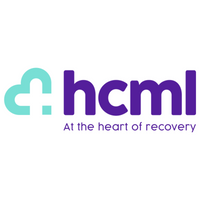Enhancing and improving employee engagement with workplace wellbeing programmes
When planned and implemented effectively, workplace wellbeing programmes can deliver measurable improvements in employee health outcomes, satisfaction, productivity and retention while reducing absenteeism and healthcare costs.
Yet despite making significant investments in their wellbeing initiatives, many organisations struggle with low engagement rates.
This is often due to poor communication, complicated access procedures, lack of personalisation and failure to address employees' actual needs.
The solution to these problems can often be tied into three key principles:
- Accessibility
- Ease of use and
- Relevance
Raise awareness through effective communication
Even the most comprehensive wellbeing initiatives fail when employees are unaware of what's available.
Effective communication must be consistent and multi-channelled.
Organisations should provide employees with regular updates through emails, newsletters and team meetings to ensure wellbeing benefits remain visible.
Creating a dedicated internal portal where employees can access all available programmes in one place also eliminates confusion and increases utilisation.
Leadership involvement is equally critical.
When managers actively promote wellbeing programmes during one-to-one meetings and demonstrate personal engagement, employees are more likely to follow suit.
Simplify access through digitalisation
The digitalisation of wellbeing services represents one of the most significant advances in programme engagement, hence our efforts to actively transform HCML’s services to enhance accessibility.
Digital platforms remove traditional barriers to participation in several ways:
- Increased accessibility allows employees to engage with wellbeing resources anytime and anywhere, which is particularly valuable for remote and hybrid workforces. Mobile applications and online portals create seamless pathways to participation without location constraints.
- Higher engagement rates emerge when digital tools incorporate elements such as reminders, gamification features and self-service options. These elements help transform wellbeing from obligation to opportunity.
- Personalisation capabilities allow employees to receive recommendations tailored to their specific needs rather than generic solutions. AI-driven platforms can suggest relevant resources based on individual preferences and requirements, while dashboards enable progress tracking.
- Data-driven insights enable employers to monitor programme effectiveness in real-time. This valuable feedback loop helps organisations refine their wellbeing strategies and focus their resources on where they deliver maximum impact.
- Operational efficiency increases as digitalisation reduces administrative burdens on HR teams, streamlining processes that were previously manual and time-consuming.
- System integration with existing HR platforms, workplace communication tools and single sign-on functionality eliminates friction points that might otherwise discourage engagement.
Lead by example and address genuine needs
Organisational culture significantly influences wellbeing programme adoption.
When the leadership team visibly participates in initiatives, it signals their importance within the company hierarchy.
Success stories from employees who have benefited from wellbeing programmes also provide powerful social proof, as these narratives demonstrate real-world value and encourage colleagues to explore available resources.
At the same time, organisations need to be wary of adopting a one size fits all approach.
This is where regular surveys and feedback mechanisms can help build an understanding of what employees truly need and value.
Offering diverse options across mental health support and physical wellbeing ensures relevance across demographic groups.
The most successful programmes acknowledge that different employees face different challenges and everyone will need a different approach to wellbeing.
Personalised recommendations based on employee demographics, interests and circumstances, meanwhile, can further enhance engagement by connecting individuals with the most applicable resources.
A data-driven approach should also apply using usage metrics to highlight which programmes resonate with employees and which require refinement.
Regular feedback collection provides qualitative insights that complement quantitative data.
Together, these information sources guide programme evolution.
No single approach works for all organisations or employees.
Continuous improvement requires openness to adaptation based on emerging needs and ever-changing workplace dynamics.
Joining up the dots
The landscape of workplace wellbeing continues to evolve rapidly.
Forward-thinking organisations recognise that addressing health issues in isolation no longer suffices.
Psychological, physical and social factors interconnect in complex ways and are often influenced by multiple variables such as workplace stress, family concerns, financial pressures, sleep quality, nutrition and activity levels.
Prevention represents the most cost-effective strategy, but achieving this requires holistic approaches that consider employees as complete individuals rather than collections of isolated health challenges.
The most successful wellbeing programmes incorporate stepped or matched care models that encourage employee participation in self-help and guided interventions alongside traditional clinical support.
This not only improves immediate outcomes but builds sustainable health management skills.
By making wellbeing programmes accessible, easy to use and relevant to employee needs, organisations create environments where health and wellbeing becomes a natural priority.
The result is a more engaged, productive and resilient workforce equipped to thrive in increasingly demanding professional landscapes.
Indeed, when employees feel supported in their wellbeing journey, they are more likely to demonstrate greater commitment, innovation and collaboration while working.
This creates a virtuous cycle where wellbeing engagement and organisational success reinforce one another.
Organisations that can achieve this will find they have less employee absence, fewer claims on their healthcare plans and less presenteeism.
Employees will see an overall improvement in their quality of life and happiness which in turn leads to a significant improvement in their overall wellbeing and satisfaction at work.
Supplied by REBA Associate Member, HCML
HCML is a health and wellbeing provider, offering integrated and personalised healthcare solutions.








